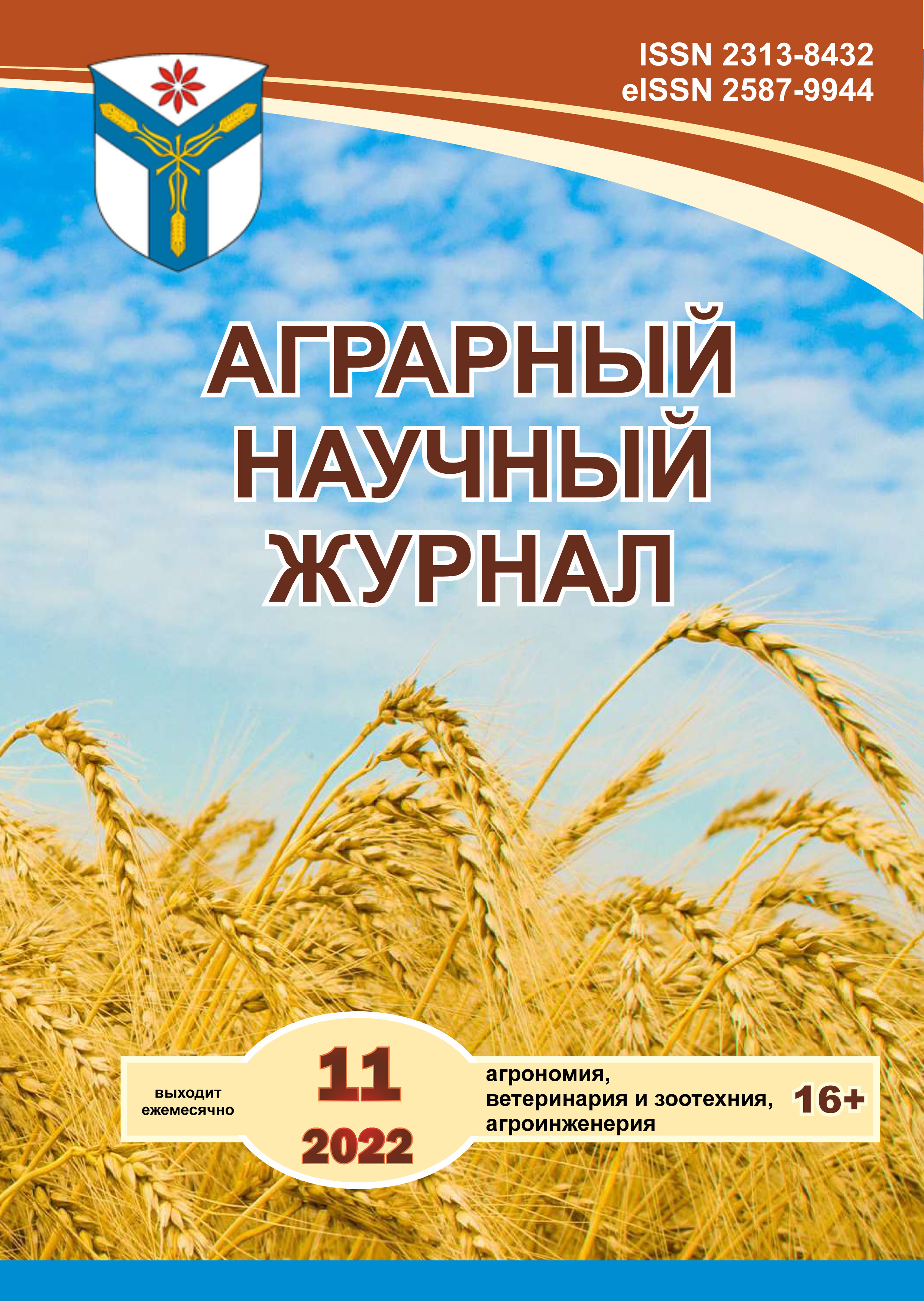Comprehensive evaluation of Robinia Pseudoacacia L. seedlings in an irrigated nursery for use in forestry and gardening in the lower Volga region
DOI:
https://doi.org/10.28983/asj.y2022i11pp38-42Keywords:
Robinia pseudoacacia L., adaptation, stress factors, biometric indicators, chlorophyll, flavonoids, anthocyaninsAbstract
The generic complex of Robinia is a fundamental and key component for urbanized and agroforestry zones. Robinia pseudoacacia L. is widely used in landscaping and protective forest plantations. Planting material has sufficient stability and durability. The studies were carried out in the nursery of the Nizhnevolzhskaya Station for tree species breeding (No. 34:36:0000:14:0178) by field stationary and laboratory methods using generally recognized methodological schemes for organizing work and constructing samples, statistical processing of primary information and analysis of variance were carried out according to generally accepted methods. The object was seedlings of the same age of Robinia pseudoacacia L. The purpose of the study was to substantiate the biometric characteristics of seedlings of Robinia pseudoacacia L. to assess the potential reclamation and decorative functions of plantations in the dry steppe conditions of the Lower Volga region. Physiological indicators of the breed have been established to determine the level of stability of the generic complex Robinia. The reaction of the pigment complex of robin plantations in the conditions of the Volgograd region was revealed. The stock of nodule bacteria Robinia pseudoacacia L at the end of the juvenile period was determined. Robinia plants are in optimal condition, actively carry out metabolic processes and protein synthesis and do not experience nitrogen deficiency (at the level of 18.4 ± 0.3), which indicates a sufficient level of nitrogen nutrition, active synthesis of metabolites, active growth and development plants. During the first year of vegetation, a specific reaction of Robinia was shown at the morpho-physiological level. Plants form a good growth, a high mass of roots and aerial mass, contribute to an active entry into symbiotic relationships with nitrogen-fixing bacteria, contain a sufficient amount of chlorophylls, flavonoids, xanthophylls. This plantation planting material of Robinia pseudoacacia L. of seed origin is recommended for creating highly productive protective plantings and plantings of greenery for various purposes in settlements and beyond in the Lower Volga region.
Downloads
References
В Волгоградской области высадят более 6 миллионов деревьев. Режим доступа: https://lacmus.life/novosti/6568-bolee-170-par-pozhenjatsja-v-volgogradskoj-oblasti-v-den-ljubvi-semi-i-vernosti.html.
Влияние фитопатогенов на содержание пластидных пигментов и интенсивность процессов перекисного окисления липидов в листьях древесных растений / С. Ю. Огородникова [и др.] // Теоретическая и прикладная экология. 2022. № 2. С. 84–92. DOI: 10.25750/1995-4301-2022-2-084-092.
Дайнеко Н. М., Тимофеев С. Ф. Распространение инвазивного вида робинии ложноакации (Robinia pseudoacacia L.) на территории Ветковского района Гомельской области // Достижения науки и образования. 2018. № 3(25). С. 7–8. EDN YTZQTF.
Использование робинии лжеакации (Robinia Pseudoacacia L.) для облесения техногенно нарушенных земель / Э. И. Трещевская [и др.] // Лесотехнический журнал. 2017. Т. 7. № 3-27. С. 151–157. DOI: 10.12737/article_59c2273cd022e3.42507886.
Лазарев С. Е., Семенютина А. В. Технологические приемы размножения и выращивания видов рода Robinia l // Успехи современного естествознания. 2021. № 3. С. 17–25. DOI 10.17513/use.37589.
Морозова Е. В., Иозус А. П., Крючков С. Н. Основные итоги селекции робинии лжеакации в Нижнем Поволжье // Успехи современного естествознания. 2018. № 12-2. С. 290–295. EDN DZHBTO.
Особенности роста робинии псевдоакации в условиях степной зоны / Н. В. Иванисова [и др.] // Лесоведение. 2021. № 3. С. 240–249. DOI: 10.31857/S0024114821030062.
Седых С. А., Бабошко О. И. Использование робинии лжеакации в защитном лесоразведении Ростовской области // Международный студенческий научный вестник. 2015. № 2-3. С. 373–374. EDN TTXLYD.
Семенютина А. В., Лазарев С. Е., Мельник К. А. Оценка репродуктивной способности представителей родовых комплексов и особенности их селекционного семеноведения в сухостепных условиях // Наука. Мысль: электронный периодический журнал. 2019. Т. 9. № 1. С. 1-23. DOI 10.25726/NM.2019.66.65.001. EDN WEGPUH.
Сурхаев И. Г., Сурхаева Г. М., Рыбашлыкова Л. П. Закономерности порослевого лесовосстановления защитных древостоев робинии псевдоакации на Терско-Кумских песках // Известия Нижневолжского агроуниверситетского комплекса: Наука и высшее профессиональное образование. 2021. № 2(62). С. 185–195. DOI 10.32786/2071-9485-2021-02-20. EDN VIWTFX.
Тюлькова Е. Г. Ингибирующий эффект летучих органических соединений на содержание фотосинтетических пигментов в листьях саженцев древесных растений // Журнал Белорусского государственного университета. Экология. 2019. № 4. С. 36–44.
Croft H., Chen J. M. Leaf pigment content // Comprehensive Remote Sensing / S. Liang (ed.). Oxford: Elsevier, 2018. P. 117–142. DOI: 10.1016/B978-0-12-409548- 9.10547-0.
Mapelli S., Malvolti M. E. Effects of drought stress on physiological and biochemical adaptation responses in young black locust Robinia pseudoacacia L. Clones // Сибирский лесной журнал. 2019. No. 3. P. 41–51. DOI: 10.15372/SJFS20190306.
Sautkina M. Yu. Dynamics of the content of chlorophylls in the leaves of the English oak (Quercus robur L.) of the forest-steppe zone // Journal of Agriculture and Environment. 2021. No. 1(17). DOI: 10.23649/jae.2021.1.17.11.
Downloads
Published
Issue
Section
License
Copyright (c) 2022 The Agrarian Scientific Journal

This work is licensed under a Creative Commons Attribution-NonCommercial-NoDerivatives 4.0 International License.








